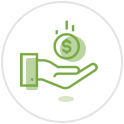It is important to stay safe while driving during the pandemic, especially when you’re in a confined space like a car along with other passengers. You need to be aware of some protective measures to maintain a healthy and pleasant environment inside the car. Below are some tips you can learn, read more to find out!
Though COVID-19 is still rampant across the country, recently hitting three-digit figures, we shouldn’t let that stop us from carrying out our daily chores and duties especially if we live in areas that are not on lockdown or in need of quarantine.
But having that freedom also comes with some responsibility. For instance, we should always wear a facemask when going out and about, practice social distancing – standing at least two metres away from others, and maintain the utmost hygiene.
It’s also good practice to keep track of when and where you’ve been as well as to identify the common areas that you always come in contact with (Read: house, office etc.). But one particular area that tends to be overlooked is your vehicle, be it car or motor.
Here are some ways to ensure a safer drive this COVID-19 season:
1. Educate yourself on COVID-19
Before knowing how to keep your vehicle safe from COVID-19, you gotta understand how it spreads first. Though we’re sure you’ve done your homework, since the pandemic has been going on for awhile (unless you’ve been living under a rock all this while), there’s no harm for a quick refresher!
According to the United States Centers for Diseases Control and Prevention (CDC), the virus spreads mainly from person-to-person. What we can gather from this is that it may spread between people who are in close contact with one another or through respiratory droplets when an infected person coughs or sneezes.
These droplets could then land in the mouths or noses of people who are within close proximity; they may also possibly be inhaled into the lungs. But not only that, the virus may also spread by people who are asymptomatic, aka, those who don’t show any symptoms.
It’s also possible for someone who touches surfaces or objects that are infected with the virus, to get COVID-19 by then touching their own mouth, nose, and eyes.
The best way to prevent being infected by COVID-19 is to avoid getting exposed to the virus in the first place, as there is currently no vaccine to prevent the virus.
2. Clean and disinfect vehicle surfaces frequently
At a minimum, clean and disinfect commonly touched surfaces of your vehicle at the beginning and end of each ride.
The CDC recommends following the cleaning and disinfection procedures consistently and correctly, including the provision of adequate ventilation when chemicals are in use.
When cleaning vehicles, CDC also suggests doors and windows to remain open, and for individuals to wear disposable gloves, PPE or a disposable gown.
“For hard non-porous surfaces within the interior of the vehicle such as hard seats, arm rests, door handles, seat belt buckles, light and air controls, doors and windows, and grab handles, clean with detergent or soap and water if the surfaces are visibly dirty, prior to disinfectant application,” according to CDC.
Appropriate disinfectants, according to CDC, include diluted household bleach solutions and alcohol solutions with at least 70% alcohol.
For soft or porous surfaces such as fabric seats, CDC suggests to remove any visible contamination if present, and clean with appropriate cleaners indicated for use on these surfaces. After cleaning, use products that are United States Environmental Protection Agency-approved (EPA) for use against the virus that causes COVID-19. If you are curious to know what ingredients are approved by EPA.
For frequently touched electronic surfaces such as tablets or touch screens used in the vehicle, CDC recommends to remove visible dirt, then disinfect following the manufacturer’s instructions for all cleaning and disinfection products. If there’s no guide on how to disinfect, try using alcohol-based wipes or sprays containing at least 70% alcohol to disinfect.
3. Perhaps it’s time to put carpooling on hold
For many families, carpooling can make all the difference in the world, especially for those who are juggling multiple children or living with a chronic illness and are prone to flares.
Due to the nature of carpooling, there may be higher risk of infected respiratory droplets spreading easily in a car, but there are also other risks like shared surfaces like door handles and seat belt buckles. Besides that, the virus could also spread when an infected individual touches a surface or object, and others end up then touching their mouth, nose, or eyes.
If you had the choice, maybe it would be a better idea to avoid carpooling to avoid any chance of infection. However, if taking a pass on carpooling or public transport is not possible, there are certain things you can do to reduce chances of infection.
- Stay home if you’re sick
- Limit the number of people in one ride
- Ride with the same people
- Try using fresh air through vents and windows
- Avoid offering or sharing water bottles, snacks or other items
- Limit close contact inside the vehicle
- Sit at least two metre away from each other when inside (if possible) and outside the vehicle
- Every person should handle their own bags and belonging
- Map out roadways and be informed of any relevant travel advisories
And generally, make sure your car is in good shape before you depart; it should be serviced once a year and inspected if you’re concerned.
4. Plan your route
In today’s COVID-19 world, planning is everything. Before stepping out of your house, consider your destination first, CDC suggests asking these questions before you depart:
- Find out if COVID-19 is spreading in your community or the area you’re visiting.
- If your passenger has an underlying condition and may be at risk for complications from the disease.
- Is it possible to maintain a two-metre distance between yourself and others during travel
- Find out if you are required to quarantine yourself for 14 days upon arrival.
To minimise contact with new public areas, we advised you to plan to make as few stops as possible. But do stop if you become drowsy.
Prepare additional food, including non perishable items, and water, to take on the trip to avoid the need to constantly make stops at public areas.
5. Try to go contactless
Since limiting contact with physical spaces is the way to go in today’s COVID-19 world, it would be super advisable to go cashless to avoid the need to touch physical surfaces.
When paying for gas, for example, pay with cards, not cash. Doing so helps eliminate the face-to-face interaction necessary for a cash transaction.
At the same time, cash can always be cleaned with a disinfectant wipe after use, unlike cash.
The rise of digital payment solutions have made it easier for us to go cashless too. Today, you can choose from one of the total of 53 e-wallets in the country.
Related: Ultimate Guide To E-Wallet In Malaysia – Which Should You Get?
When getting gas, use a disinfectant wipe on handles or buttons before you touch them. After you’re done fueling, use a hand sanitizer to clean yourself. Upon arrival at your destination, clean your hands with soap and water for at least 20 seconds.
If you do choose to pick up a meal on the road, consider restaurants that offer drive-thru or curbside service instead of going in.
6. Sanitise public areas, particularly at rest areas
Bring a hand sanitiser with you and disinfect all areas that you may get in contact with when dining out or shopping. This may require you to invest in a few bottles of hand sanitisers a month but it would be totally worth it.
Clean and disinfect public restrooms after use especially if you’ll be relying heavily on restrooms at highway rest areas or gas stations.
Also try to avoid the faucet, bidet or door handle after washing your hands. One good tip is to either disinfect it right away or use a piece of tissue or paper towel to shield your hands after washing.
Just be more vigilant in general
With COVID-19 likely to stay until the end of next year, everyone just needs to be more precautious with how they go about their day-to-day.
On top of practicing usual routines like maintaining hygiene, social distancing and wearing a mask, this virus has taught us to be more mindful with how we carry our activities. More than ever, we need to plan ahead and stay abreast of the latest developments related to the virus.
















